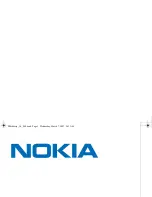
Glossary
107
OLE DB
An Application Programming Interface (API) that allows low-level programming languages
such as C and C++ to access dissimilar data stores through a common query language. OLE
DB is seen as the replacement for Open Database Connectivity (ODBC). Data stores such
as those in Exchange 2000 and SQL Server allow for OLE DB access, which makes appli-
cation development easier and faster.
High-level programming languages such as Visual Basic can use ActiveX Data Objects
(ADO) to issue queries through OLE DB.
Opaque item
Message text that cannot be read without being deciphered, also known as an enciphered
item.
Outlook Web Access
The Web browser interface to Exchange Server mailbox and public folder data. The Outlook
Web Access client in Exchange Server 5.x uses Active Server Pages to render collaboration
data into HTML, whereas the Outlook Web Access Client in Exchange 2000 uses native
access to the store.
Policy
A collection of configuration settings that can be applied to objects of the same class in
Active Directory. In relation to Exchange 2000, this may include mailbox thresholds and
deleted item retention.
Post Office Protocol version 3 – POP3
A standards-based protocol for simple access to Inbox data. All versions of Exchange
server except version 4.0 support POP3. POP3 uses TCP/IP port 110 for client to server
access.
Protocol farm
A collection of virtual servers that are used as the primary connection point for users in an
organization. The farm abstracts the connection protocols from the location of the back-
end data, which allows users to access information without having to know its physical
location.
Public folder connection agreement – PFCA
A connection agreement in the Active Directory Connector (ADC) that is responsible for
replicating Public Folder proxy objects between the Exchange 5.5 directory and Active
Directory. These objects are necessary for sending e-mails directly to the folder. Each PFCA
is hard-coded to be two-way, and will replicate between the site naming context in Ex-
change 5.5 and the ‘Microsoft Exchange System Objects’ container in the Active Directory
domain. It is normal to create one PFCA for each Exchange 5.5 site in the organization.








































